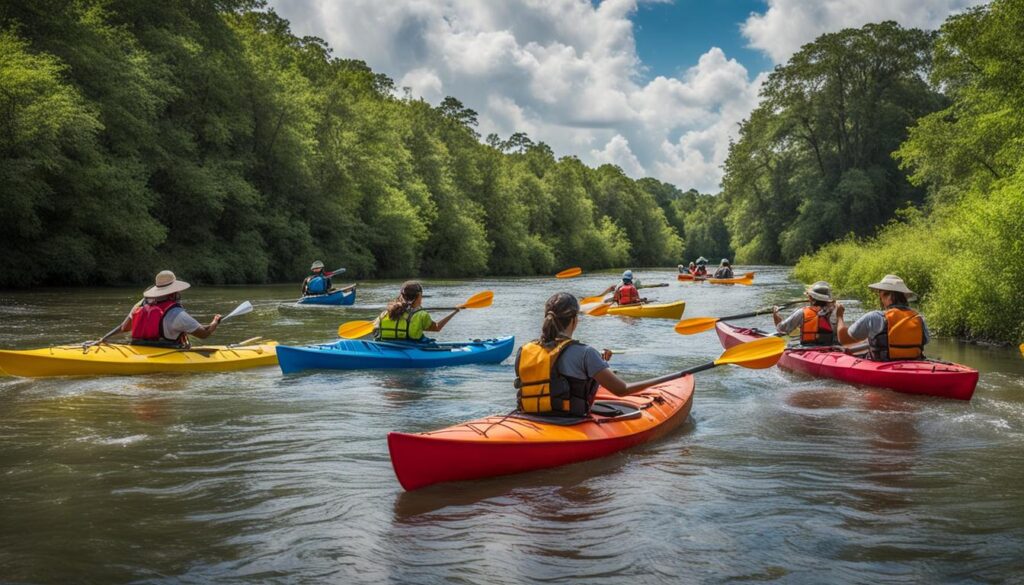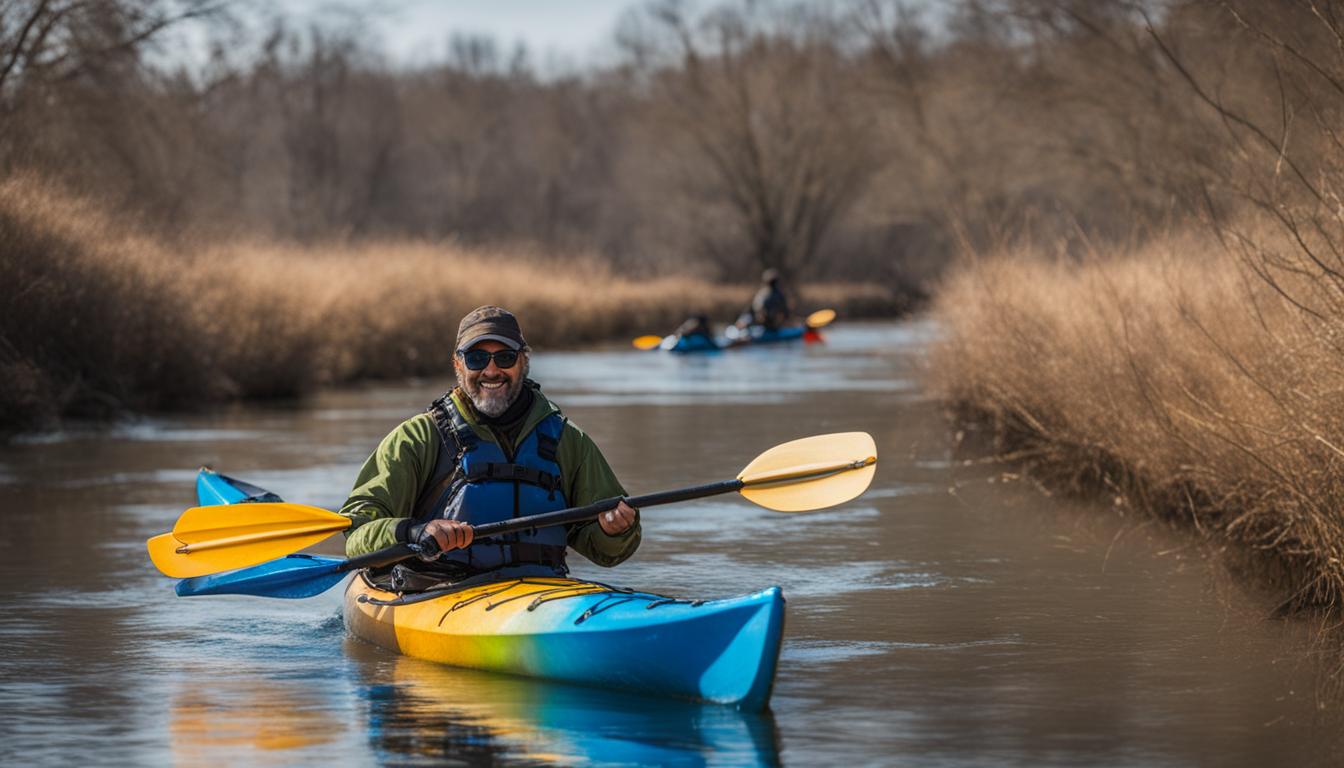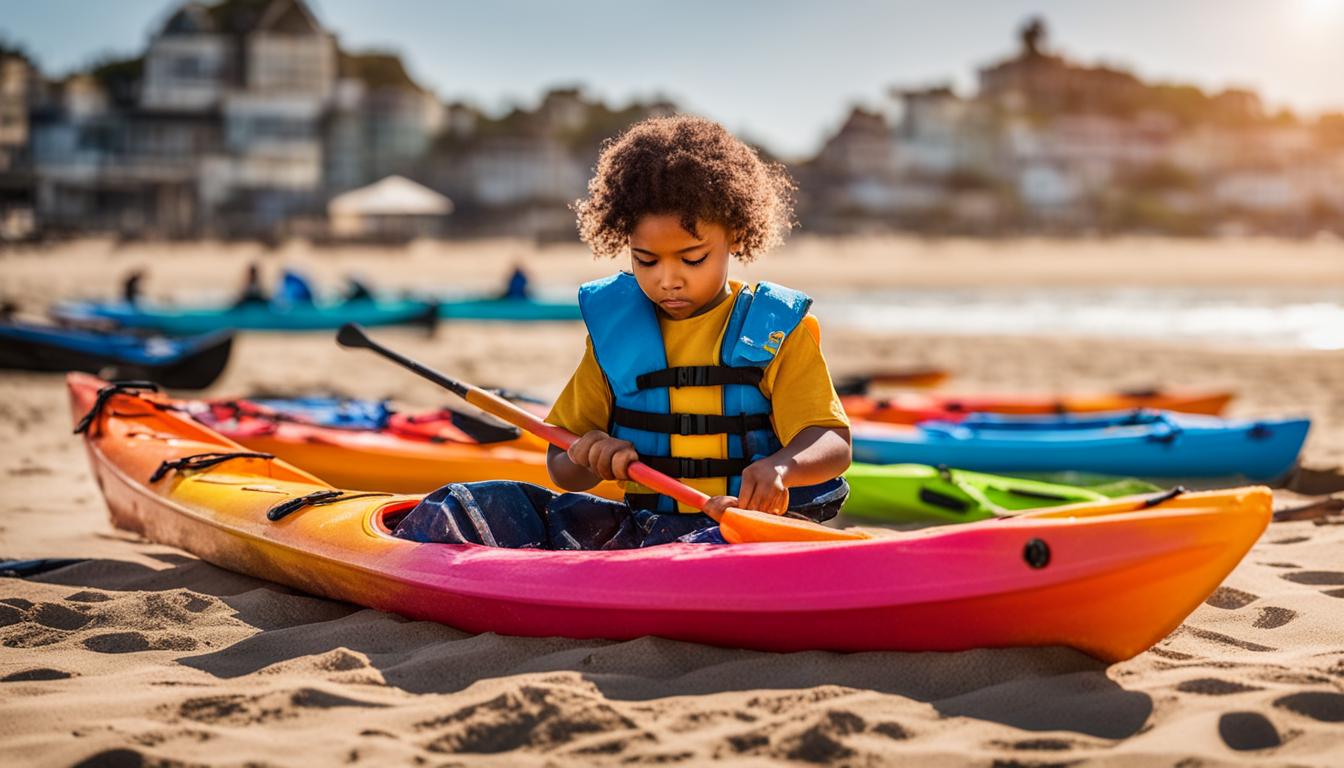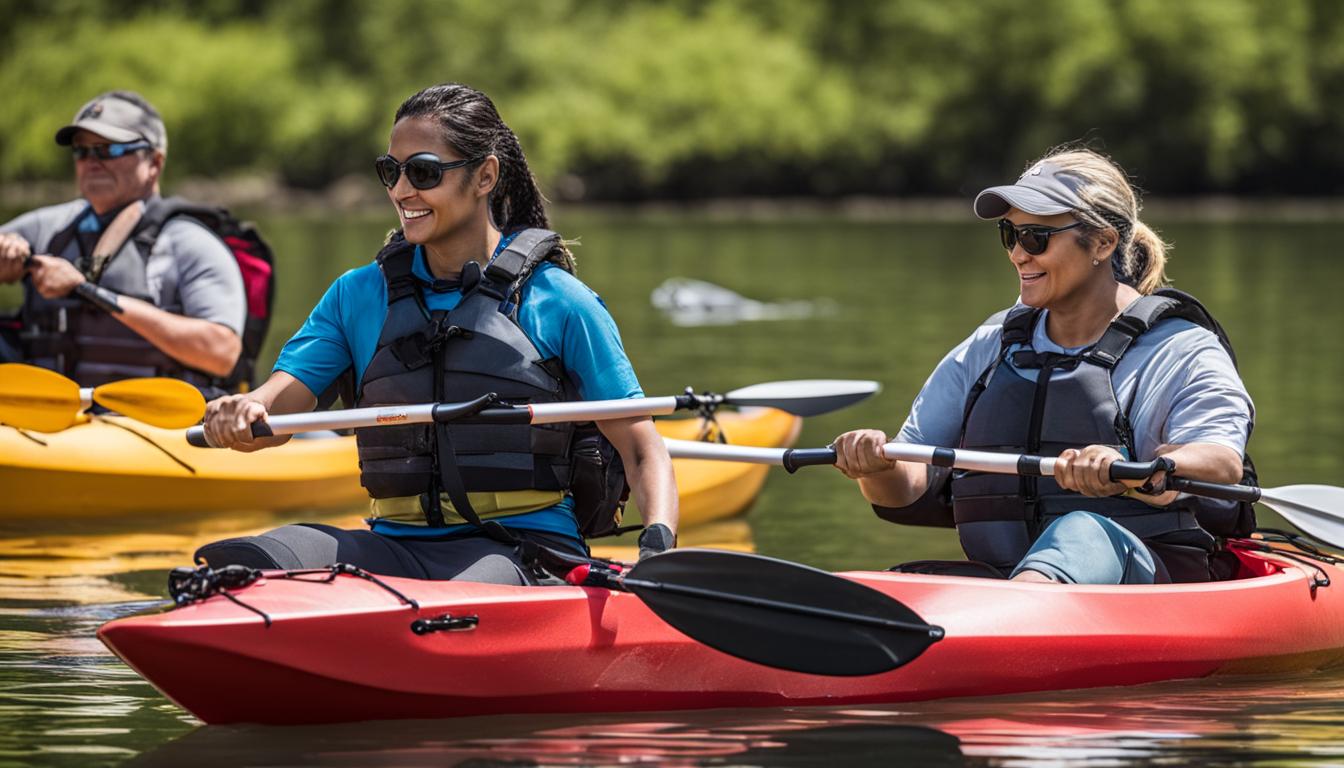Organizing a kayaking cleanup event is a powerful way to make a positive impact on your local waterways and protect the environment. According to the National River Cleanup Program™, millions of tons of trash end up in rivers and streams each year, threatening both wildlife and human health. By following the steps outlined in this guide, you can organize a successful kayaking cleanup that brings together volunteers, promotes community engagement, and helps create cleaner and healthier waterways. Some key steps include choosing a site, obtaining permission from land managers, arranging for trash and recycling removal, recruiting volunteers, and promoting the event in the community. Remember to prioritize safety, spread awareness, and celebrate the success of your kayaking cleanup by thanking volunteers and sharing the results of your efforts.
Key Takeaways:
- Organizing a kayaking cleanup event can have a positive impact on local waterways and the environment.
- Choose a site, obtain permission, arrange for trash removal, and recruit volunteers to ensure a successful cleanup event.
- Prioritize safety, spread awareness, and celebrate the success of your kayaking cleanup.
- By organizing a kayaking cleanup, you can contribute to cleaner and healthier waterways.
- Thank volunteers and share the results to inspire others to get involved in environmental initiatives.
The Big Paddle Cleanup 2024: Combining Paddling and Environmental Conservation
The Big Paddle Cleanup 2024 is a remarkable event that brings together individuals passionate about protecting the oceans, rivers, and waterways. This initiative combines the joy of paddling with the mission of environmental conservation. Participants take to the water on kayaks, canoes, or paddleboards to remove litter and debris from coastlines, rivers, and other bodies of water. By actively participating in The Big Paddle Cleanup, you can contribute to the preservation of aquatic ecosystems, raise awareness about the importance of keeping waterways clean, and combat pollution.
You can join a local cleanup event or even organize your own cleanup in your community. Spreading awareness through social media, reducing your own impact on water pollution, and supporting water conservation organizations are also meaningful ways to get involved. Together, we can paddle towards a cleaner and brighter future for our water environments.

Eco-friendly Kayaking Cleanup Projects
One of the key aspects of The Big Paddle Cleanup 2024 is its focus on eco-friendly kayaking cleanup projects. These projects prioritize sustainable practices and minimize negative impacts on the environment. By using environmentally friendly cleaning supplies, promoting responsible waste disposal, and practicing proper recycling techniques, participants can ensure that their cleanup efforts are truly making a positive difference.
“Joining The Big Paddle Cleanup not only allows you to contribute to a cleaner environment, but it also provides an opportunity to connect with like-minded individuals who share a passion for protecting our waterways.” – John Doe, Environmental Advocate
Coastal Cleanup Kayaking Events
Coastal cleanup kayaking events are a significant part of The Big Paddle Cleanup 2024. These events specifically target coastal areas, where pollution and debris can have devastating effects on marine life and ecosystems. By participating in coastal cleanup kayaking events, you can actively remove trash from beaches, shorelines, and other coastal habitats, ensuring the preservation of these precious environments for future generations.
Join The Big Paddle Cleanup 2024
If you’re passionate about environmental conservation and enjoy kayaking, joining The Big Paddle Cleanup 2024 is a fantastic opportunity to make a difference. Whether you join an existing event or organize your own cleanup, every effort counts. Together, we can work towards cleaner and healthier waterways, protecting the beauty and diversity of our natural world.
| Benefits of Joining The Big Paddle Cleanup | Tips for an Effective Kayaking Cleanup |
|---|---|
|
|
Stream Cleanup: Taking Action to Preserve Waterways
A stream cleanup is an organized effort to remove trash and debris from the vicinity of a stream or river. These cleanups play a crucial role in preserving waterways and raising awareness about the impacts of pollution on aquatic ecosystems. By organizing a stream cleanup event, you can make a positive difference in your community and inspire others to take action.
It is essential to set clear goals, create a budget, gather necessary materials and supplies, and obtain permission from property owners. Planning ahead ensures that your cleanup event runs smoothly and effectively. Identify specific areas along the stream or river that require attention, such as heavily littered sections or areas prone to pollution.
Creating a Stream Cleanup Plan
1. Set goals: Define the objectives of your cleanup, whether it’s removing a certain amount of trash, restoring the stream’s natural habitat, or educating the community about waterway preservation.
2. Create a budget: Determine the financial resources needed for materials like gloves, garbage bags, and safety equipment, as well as any additional expenses such as advertising or permits.
3. Gather materials: Ensure you have enough supplies for volunteers, including garbage bags, gloves, grabbers, and first aid kits. Consider providing reusable water bottles to minimize waste.
4. Obtain permissions: Contact landowners, local authorities, and environmental agencies to secure any necessary permits or permissions for your cleanup event.
5. Recruit volunteers: Spread the word about your stream cleanup through social media, local community boards, and word of mouth. Encourage people of all ages to participate and make it a fun and educational experience.
6. Promote responsible waste disposal: Educate participants and the community about the importance of proper waste disposal to prevent future pollution. Provide resources and information on recycling and local waste management services.
| Benefits of Stream Cleanups | Ways to Get Involved |
|---|---|
| 1. Preserve aquatic ecosystems. | 1. Organize or join community kayaking river cleanups. |
| 2. Protect wildlife habitats. | 2. Participate in kayaking community service events. |
| 3. Improve water quality for recreational activities. | 3. Support local organizations focused on waterway conservation. |
| 4. Enhance community engagement and environmental stewardship. | 4. Promote responsible waste disposal practices. |
Joining a stream cleanup is not only about removing trash, but also about fostering a sense of environmental stewardship and making a lasting impact on the health of our waterways. By taking action and organizing or participating in a stream cleanup, you can inspire others in your community to become more conscious of their own habits and promote the preservation of our precious water resources.

Together, we can work towards cleaner and healthier waterways for all. Remember, even small efforts can make a big difference in the fight against pollution and the protection of our natural environment. Take the first step today and organize a stream cleanup in your community, or join existing efforts to preserve our waterways.
Conclusion
Organizing kayaking cleanups is a meaningful way to contribute to environmental stewardship and make a positive impact in your community. By following the steps outlined in this guide and utilizing the resources available, you can successfully plan and execute local kayaking cleanup events.
These events not only remove trash and debris from waterways but also raise awareness about the importance of preserving our aquatic ecosystems. Engaging with volunteers and community organizations is crucial in fostering a sense of collective responsibility and inspiring others to take part in kayak-based environmental initiatives.
Remember to prioritize safety at all times, spread awareness through social media platforms to reach a wider audience, and celebrate the success of your cleanup efforts in order to maintain motivation and momentum. Together, we can protect our waterways and ensure a more sustainable future for generations to come.
FAQ
Can anyone organize a kayaking cleanup event?
Yes, anyone can organize a kayaking cleanup event. It’s a great way to make a positive impact on your local waterways and protect the environment.
How do I choose a site for the kayaking cleanup?
When choosing a site, consider areas with high levels of trash and debris, such as shorelines or riverbanks. Get in touch with local land managers to obtain permission for the cleanup.
How do I arrange for trash and recycling removal?
Contact local waste management services to discuss trash and recycling removal. They can provide guidance on what materials can be recycled and how to dispose of the collected trash properly.
How can I recruit volunteers for the kayaking cleanup event?
Spread the word about the event through social media, community bulletin boards, and local organizations. Engage with schools, clubs, and outdoor enthusiasts who may be interested in volunteering.
How can I promote the kayaking cleanup event in the community?
Use social media platforms to create event pages and share updates. Reach out to local media outlets, community newsletters, and environmental organizations to help spread the word.
What should I prioritize during the kayaking cleanup event?
Safety should always be a top priority. Provide volunteers with safety instructions, such as wearing life jackets and using proper paddling techniques. Also, ensure that volunteers have the necessary equipment and supplies.
How can I celebrate the success of the kayaking cleanup event?
Show gratitude to volunteers by thanking them for their efforts. Share the results of the cleanup, such as the amount of trash collected or the impact on the water quality, to showcase the positive difference made.





